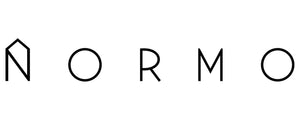
IP protection - indexes and classes
This standard, divided into several degrees, indicates the resistance of electrical or electronic equipment to the intrusion of solids and liquids and to access to components that pose a safety risk to the user.
Therefore, IP protection information makes it easy to know whether an object is suitable for operation in a given environment.
The IP code has two digits – the first indicates protection against external solid bodies that could pose a risk if they came into contact with components, parts or electrical circuits; and the second indicates protection against liquids, ranging between 0 (no protection) and 9 (protection against high-pressure water jets from various angles).
Both digits can be replaced by an X, which means that the object has not been subjected to testing or there is not enough data to specify a protection index for this criterion.
The following table lists the meanings of each numeral for the two digits:
Meaning of the
|
Meaning of the
|
|
| no protection against contact or intrusion of bodies |
0 |
no protection against contact with liquids |
| protected against solid bodies with a diameter equal to or greater than 50 mm |
1 |
protected against vertically falling droplets |
| protected against solid bodies from 12.5 mm |
2 |
protected against droplets on angles of up to 15° |
| protected against solid bodies from 2.5 mm |
3 |
protected against liquid sprays at any angle up to 60° |
| protected against solid bodies from 1 mm |
4 |
splash protected |
| protected against dust particles, not completely preventing their intrusion but allowing satisfactory operation of the equipment |
5 |
protected against jets |
| dust-tight, with full protection against particle intrusion |
6 |
protected against continuous or powerful jets |
| — |
7 |
protected against temporary immersion (up to 30 min.) |
| — |
8 |
protected against permanent immersion. May allow water ingress, but only in such a way as not to impair safe operation of the equipment |
| — |
9K |
protected against high pressure and high temperature sprays at close range |

Thus, in two different products with IP43 and IP53 protection levels, for example, we can conclude that in both the protection against water ingress is the at the same level, with the only difference being the resistance against particle ingress.
IP protection levels can only be determined after carrying out tests and trials on the product under the conditions described in each of them.
The classification of a product with a high IP protection rating does not necessarily mean that it has been tested for lower ratings, as these tests are not cumulative or complementary.
In the Normo online store, the ranges available include the most common protection levels, such as lamps with IP20, IP44 and IP65 protection.
You can check products with any given degree of protection using the ‘Filter’ feature on our website (at the top of the page).
For indoor lighting, an IP20 rating is most common, while IP44 is usually found on portable and bathroom lamps.
Most of our outdoor lamps have IP65 protection.
In bathrooms, there are areas where it is recommended to install luminaires with a minimum IP protection rating for proper operation, as illustrated in the diagram below:

Protection classes
In addition to these digits, the IP information is complemented by classes that indicate the degree of electrical insulation of the equipment, that is, the protection it offers against electric shocks.
Symbol |
Class |
|
1 |
Luminaires with protection against electric shocks dependent on a connection to an earth terminal, to which all sensitive metal parts must be connected, such that they do not conduct electricity in the event of a failure of the main insulation. | |
2 |
Luminaires with protection against electric shocks with non-accessible metal parts and additional safety measures, such as double or reinforced insulation. They do not require a protective earth terminal and are not dependent on the installation conditions. |
|
3 |
Luminaires powered by a reduced safety voltage (below 50V), without generating voltages higher than the operating voltage. |
If you need any help or advice, our team can help with this and other issues that may arise in your lighting project.
Click here to find out all the ways you can get in touch with us.
Last update: 12/03/2025
